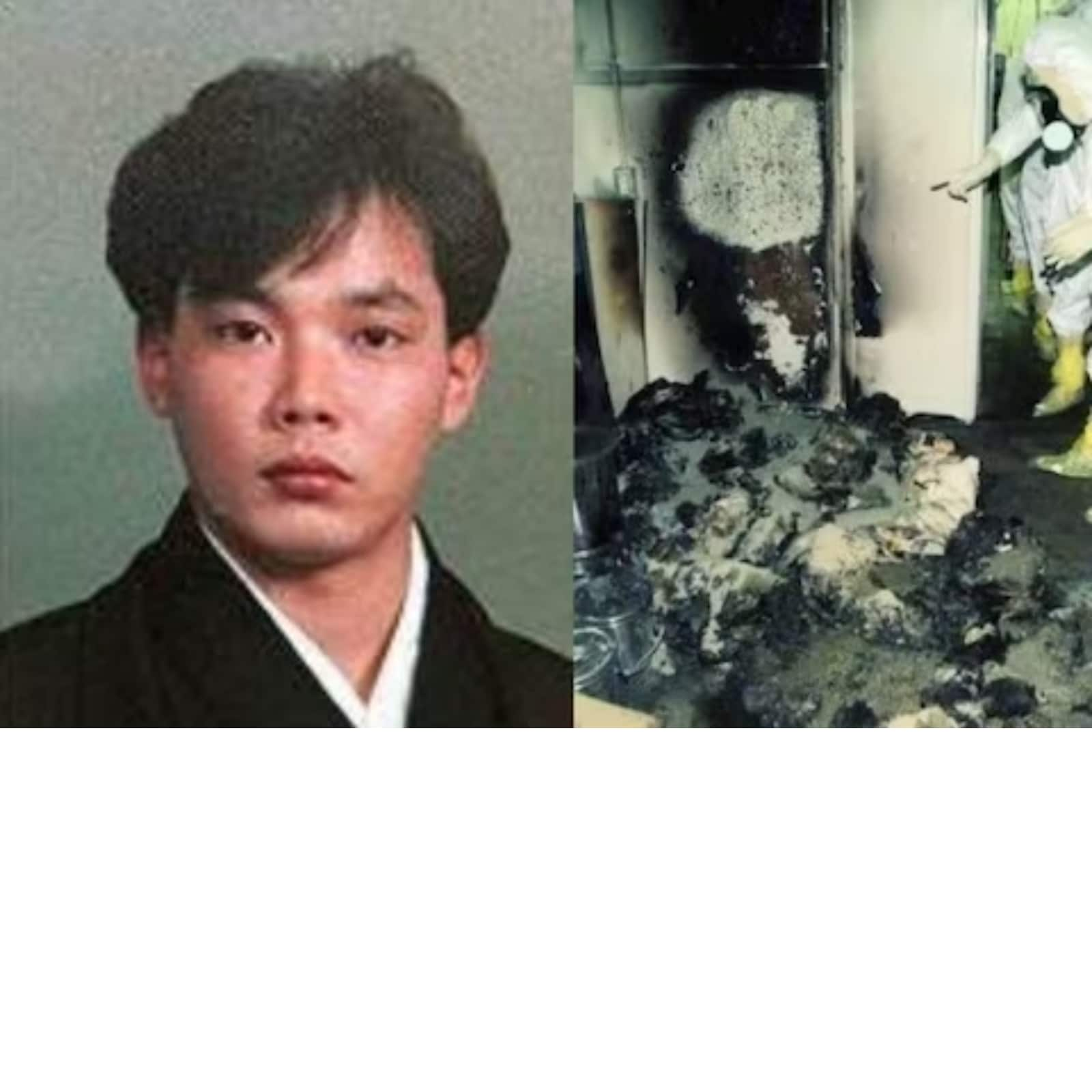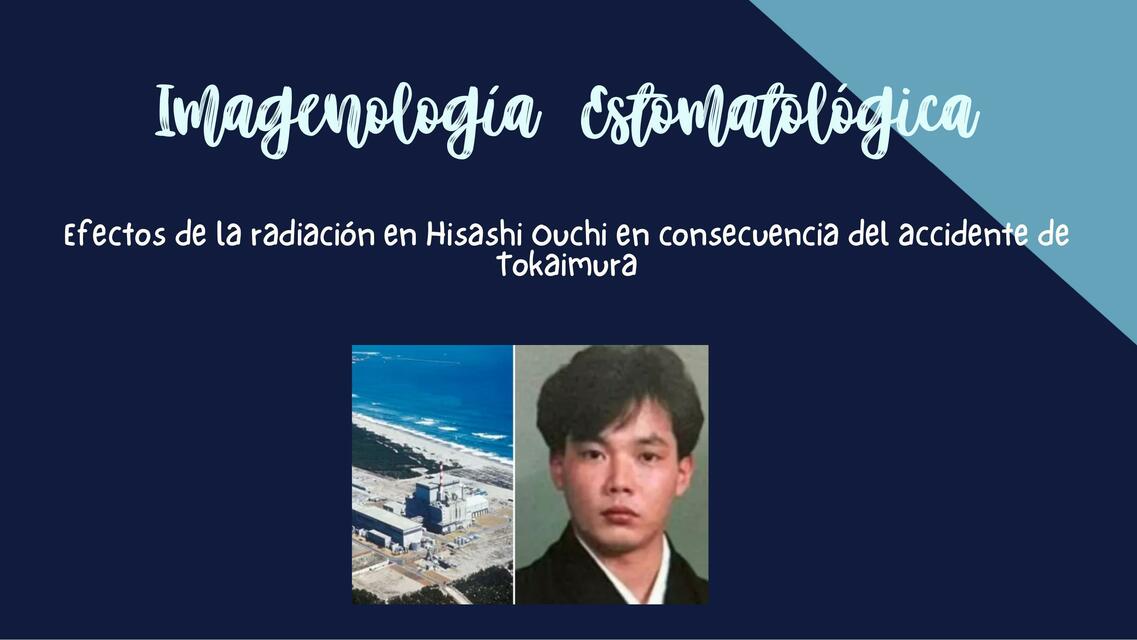Hisashi Ouchi Real Photos: Unveiling The Untold Story
Hisashi Ouchi's story is one of the most haunting reminders of the dangers of nuclear energy. His real photos have circulated for years, sparking debates about ethics, privacy, and the human cost of nuclear accidents. But who was Hisashi Ouchi, and why do his photos still resonate so deeply? Let's dive into the details and uncover the truth behind the man whose name became synonymous with tragedy.
It all started on December 1999, when an unimaginable nuclear accident occurred at the Tokaimura plant in Japan. Hisashi Ouchi was one of the workers involved in this catastrophic event, and his story quickly became a symbol of the dangers of nuclear power. Hisashi’s ordeal was not just a story of survival but also a chilling reminder of how fragile human life can be in the face of such powerful forces.
As we explore Hisashi Ouchi's real photos, we must approach this sensitive topic with care and respect. These images are not just pictures; they are a testament to human resilience and the enduring impact of nuclear disasters. So, let’s take a closer look at Hisashi’s journey and understand why his story continues to resonate with people worldwide.
Read also:Brian Taylor Cohen Partner The Untold Story Of Success And Expertise
Who Was Hisashi Ouchi?
Before we delve into Hisashi Ouchi’s real photos, it’s essential to understand who he was as a person. Hisashi Ouchi was a 35-year-old worker at the JCO nuclear fuel processing plant in Tokaimura, Japan. Like many others, he was just doing his job when fate intervened. But who was the man behind the headlines?
Hisashi was a dedicated employee with a passion for his work. He was known for his meticulous approach and dedication to safety protocols. However, on that fateful day, everything changed. The accident at the Tokaimura plant exposed him to lethal levels of radiation, leading to one of the most severe radiation poisoning cases in history.
Biography of Hisashi Ouchi
Let’s take a moment to explore Hisashi Ouchi’s life in more detail. Below is a summary of his personal and professional background:
| Full Name | Hisashi Ouchi |
|---|---|
| Date of Birth | March 26, 1964 |
| Place of Birth | Tokaimura, Japan |
| Profession | Nuclear Plant Worker |
| Accident Date | September 30, 1999 |
| Date of Death | December 21, 1999 |
Hisashi’s life was tragically cut short, but his legacy lives on through the lessons learned from his experience.
Hisashi Ouchi Real Photos: The Controversy
Now, let’s talk about Hisashi Ouchi’s real photos. These images have sparked intense debates over the years. Some argue that they are a crucial educational tool, while others believe they violate Hisashi’s privacy. So, what’s the truth?
Hisashi’s photos were taken during his treatment at the University of Tokyo Hospital. They show the devastating effects of radiation exposure on the human body. While these images are undeniably graphic, they also serve as a powerful reminder of the dangers of nuclear accidents.
Read also:Securely Connect Remote Iot Vpc Aws Troubleshooting When Its Not Working
Why Are These Photos Important?
Hisashi Ouchi’s real photos are not just shocking visuals; they carry important messages. Here are some reasons why these images matter:
- They highlight the dangers of nuclear energy and the importance of safety protocols.
- They serve as a warning to future generations about the potential consequences of nuclear accidents.
- They remind us of the human cost behind such disasters, emphasizing the need for compassion and empathy.
These photos are a stark reminder of the sacrifices made by individuals like Hisashi Ouchi.
Understanding Radiation Poisoning
To fully grasp the significance of Hisashi Ouchi’s real photos, we must understand radiation poisoning. This condition occurs when the body is exposed to high levels of ionizing radiation, causing severe damage to cells and tissues.
Hisashi’s exposure was catastrophic, with his body absorbing a dose of over 17 sieverts. To put that into perspective, most people can survive exposure to doses below 1 sievert, but anything above that is often fatal.
Symptoms of Radiation Poisoning
Here’s a breakdown of the symptoms Hisashi experienced:
- Burn-like wounds on the skin
- Severe internal organ damage
- Extreme fatigue and weakness
- Loss of hair and skin
Hisashi’s battle with radiation poisoning was a harrowing experience that lasted for over two months.
The Tokaimura Nuclear Accident
Let’s take a step back and examine the Tokaimura nuclear accident in detail. This event is one of the worst nuclear disasters in history, and it changed the lives of many forever.
On September 30, 1999, workers at the JCO plant were preparing a batch of uranium fuel. Due to a series of errors, they accidentally created a critical mass, triggering an uncontrolled nuclear chain reaction. Hisashi Ouchi and two of his colleagues were directly exposed to the radiation, leading to severe injuries.
Causes of the Accident
Several factors contributed to the Tokaimura disaster:
- Inadequate safety training for employees
- Failure to follow proper procedures
- Poor oversight by management
This tragedy serves as a stark reminder of the importance of safety in nuclear facilities.
Hisashi Ouchi’s Fight for Survival
Hisashi Ouchi’s battle against radiation poisoning was nothing short of heroic. Despite the odds stacked against him, he fought for over two months, enduring unimaginable pain and suffering.
Doctors at the University of Tokyo Hospital did everything in their power to save Hisashi. They attempted skin grafts, blood transfusions, and even experimental treatments, but the damage to his body was too extensive.
Lessons Learned from Hisashi’s Story
Hisashi’s ordeal teaches us several important lessons:
- The importance of adhering to safety protocols in nuclear facilities
- The need for better training and oversight in high-risk industries
- The human cost of nuclear accidents and the importance of compassion
Hisashi’s story is a powerful reminder of the sacrifices made by individuals in the name of progress.
Impact on Public Perception
Hisashi Ouchi’s real photos have had a profound impact on public perception of nuclear energy. They have sparked debates about the ethics of using such powerful technology and the importance of prioritizing safety over profit.
Many people have called for stricter regulations and better oversight in the nuclear industry. Hisashi’s story has also inspired countless individuals to advocate for safer working conditions and better protection for workers.
Public Reaction to Hisashi’s Photos
Here’s how the public has responded to Hisashi Ouchi’s real photos:
- Some view them as a crucial educational tool
- Others believe they violate Hisashi’s privacy
- Many feel a deep sense of empathy and sorrow for Hisashi’s suffering
Regardless of differing opinions, Hisashi’s photos have undoubtedly left a lasting impact on society.
Legacy of Hisashi Ouchi
Hisashi Ouchi’s legacy extends far beyond his tragic death. His story continues to inspire people worldwide to advocate for safer working conditions and better protection for workers in high-risk industries.
Hisashi’s real photos serve as a powerful reminder of the human cost of nuclear accidents. They challenge us to rethink our approach to nuclear energy and prioritize safety above all else.
Remembering Hisashi Ouchi
As we reflect on Hisashi Ouchi’s life and legacy, let’s not forget the lessons he taught us. His story is a testament to human resilience and the enduring impact of nuclear disasters. By remembering Hisashi, we honor his memory and ensure that his sacrifices were not in vain.
Conclusion
In conclusion, Hisashi Ouchi’s real photos are more than just images; they are a powerful reminder of the dangers of nuclear energy and the importance of safety. His story continues to resonate with people worldwide, inspiring them to advocate for safer working conditions and better protection for workers.
As we move forward, let’s take a moment to reflect on Hisashi’s legacy and the lessons he taught us. His story is a powerful reminder of the sacrifices made by individuals like him and the importance of compassion and empathy in the face of tragedy.
So, what’s next? We encourage you to share this article with others and join the conversation about nuclear safety. Together, we can honor Hisashi’s memory and ensure a safer future for all.
Table of Contents
- Who Was Hisashi Ouchi?
- Biography of Hisashi Ouchi
- Hisashi Ouchi Real Photos: The Controversy
- Why Are These Photos Important?
- Understanding Radiation Poisoning
- Symptoms of Radiation Poisoning
- The Tokaimura Nuclear Accident
- Causes of the Accident
- Hisashi Ouchi’s Fight for Survival
- Lessons Learned from Hisashi’s Story
- Impact on Public Perception
- Public Reaction to Hisashi’s Photos
- Legacy of Hisashi Ouchi
- Remembering Hisashi Ouchi
Article Recommendations


